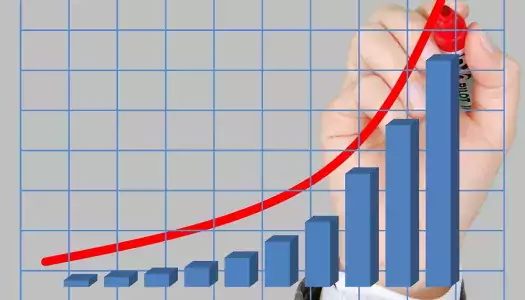How many promotions and advertisements do your members see each day? By any count, too many. Yet you count on them seeing, opening, and clicking on the promotions you send out about your online educational programs. Unfortunately, promotional content isn’t worth most people’s time unless they’re already highly motivated to buy. But, informational or educational content is another story—and that’s why content marketing is the best marketing strategy for educational programs.
Why content marketing is effective
The logic behind content marketing is simple: you provide content that does one or more of these things for your target audience:
- Helps them understand an issue or opportunity.
- Answers their questions.
- Provides information to help them do their job better or advance in their career.
- Gives advice to help them manage and grow their business.
The best kind of marketing is content marketing because it helps you develop a relationship with your readers. When you regularly provide readers with the information they need, they see you as a reliable resource who understands their needs and aspirations. They’re more likely to open your emails or click on the links you share because you’ve proven your value to them.
Content marketing encourages your target audience to move through your sales funnel by attracting their attention, nurturing their interest, demonstrating your value, and, ultimately, converting them from prospects to loyal customers.
How content marketing works
Content marketing isn’t as complicated as you might think. Keep it simple:
- Know what you want to accomplish—your marketing goals.
- Understand your audience and their educational or informational needs.
- Figure out what type of free content will meet those needs and lead them toward your paid content—your courses and other online programs.
- Decide how you will deliver and how often you will deliver that free content.
Let’s walk through an example. In your market research discussions with employers, you’ve learned about the need for more employees to know how to use a new technology that’s quickly being adopted in your industry. Because this technology is changing how people work, you’ve developed a new online program that teaches people how to use it.
You want to use content marketing to increase awareness about the need for these skills and about your new online program that teaches these skills. Besides increasing attendance and revenue, you also want to develop and deepen your relationship with this segment of the market so you can better understand their educational needs.
How to use content to market your educational programs
Content marketing helps you educate your target audience so they’ll be a more receptive audience when you market your paid content—your new online course. From reading your free content, they realize they need your course if they wish to keep their job or get a better job.
Free content attracts people into your sales funnel. You then nurture those marketing leads with additional free content until they’re ready and willing to pay for what you’re offering. They go from not knowing the value of what you offer to realizing they can’t do without it.
What’s the difference between the content you give away and the content you sell? Free content is a snack; paid content is a meal. Free content is valuable enough to attract the interest of your audience, but not as valuable as your online course.
Free content is about the What and the Why; paid content is about the How. What does your target audience need to know, be aware of, understand, or believe in before they’re ready to invest in your paid program? The goal of your free content is to answer those questions for your audience.
Free content provides individual tips and insights that paint a picture of how much better life (or work) is when you have the skills and knowledge provided by your paid program. Your free content provides some value on its own—which is why your audience keeps coming back—but it doesn’t go into great detail like your paid program.
Only the paid program provides a system or step-by-step roadmap for learning new skills or knowledge—the How. Paid content is more specific and advanced. It goes deeper and paints a more complete picture. In the paid program, you drill down on strategies and tactics, and provide context and resources.
For example, your free content could be a series of blog posts or a webinar about the advantages of the new technology and how it’s already changing the way people work. This content could feature interviews with professionals who have advanced in their career because of their new skills using the technology. You could provide a self-assessment quiz that shows people how current (or dated) their skills are compared to colleagues working with this new technology.
Where to find content to use for marketing
Once you identify the questions you want to answer for your audience, you have to find content that answers those questions and aligns with your marketing goals. You may already have content you can use or you may have to create or curate content.
Use your association’s existing content and/or content from external sources as long as you have (or can obtain) intellectual property rights to the content or can get permission to use it, for example:
- Blog posts, newsletter articles, and magazine articles
- Conference recordings
- Handouts and presentations
- On-demand webinars and videos
- Podcasts
- Excerpts of existing course materials
Repurpose and update content where necessary. For example, break up a long article into shorter blog posts. If you don’t have enough free content to lure people in, have someone write it for you—a speaker, instructor, industry influencer, or freelancer.
Don’t ignore the value of curated content. Your audience will appreciate you reviewing the latest posts and articles and sending them a selection of the best.
Find or create content for lead magnets. A lead magnet is free content—a tip sheet, checklist, report, or template—that attracts someone like a magnet. A reader learns about the lead magnet through a promo (call-to-action) in a blog post, newsletter, or social media update. In exchange for their email address, the reader downloads the content. Now you have a lead to nurture through email campaigns—campaigns which feature additional valuable, free content.
When and where to publish free marketing content
Consistency is key. Your content should make regular appearances in your prospect’s life so they start relying on you for updates and valuable information. Don’t rely on one delivery channel. Everyone has different preferences in how they like to receive information:
- Blog posts – offer a subscription option, and, remember, the more you publish, the better your Google ranking.
- Email – let subscribers pick their preferred frequency.
- Social media – updates disappear in the never-ending stream of information stream so post several times a day.
- Podcasts – audiences are growing so consider starting a podcast.
- Webinars – give your audience a taste of online learning.
Become a trusted and reliable source of information and education for your audience by using content marketing. When they realize their skills and knowledge fall short of where they’d like to be, your online learning programs will be their most obvious choice.








